By: Laura Holt
Published: July 22nd, 2025
GLP-1 medications like Ozempic, Wegovy and Zepbound are changing the game for weight loss and diabetes but they’re not magic. Learn what GLP-1s do, who they help, what results to expect, and how SALTA supports safe, effective use.

GLP-1s are a type of medication that mimic a natural hormone your body already makes. They are designed to act just like your body’s own signaling system, especially the part that helps you feel full and keeps your blood sugar steady. GLP-1 medications work by activating GLP-1 receptors (short for glucagon-like peptide-1) in the brain, pancreas, and digestive system. These receptors help regulate hunger, insulin, and digestion.
Even though they help people lose weight, GLP-1s were first developed to treat type 2 diabetes because of how well they help regulate insulin and lower blood sugar. They do more than just reduce food intake. They actively improve how your pancreas and insulin system respond to meals.
You’ve probably heard of Ozempic, Wegovy and Zepbound, but those are just brand names. The actual drug names behind GLP-1 medications are: Semaglutide, Tirzepatide, Liraglutide, Dulaglutide, and Exenatide.
While they all belong to the GLP-1 family, they’re not all the same. Here’s what sets them apart:
| Drug Name | Brand Name(s) | Dosing | Approved For |
| Semaglutide | Ozempic, Wegovy | Weekly injection | Diabetes, Weight loss |
| Tirzepatide | Mounjaro, Zepbound | Weekly injection | Diabetes, Weight loss |
| Liraglutide | Victoza, Saxenda | Daily injection | Diabetes, Weight loss |
| Dulaglutide | Trulicity | Weekly injection | Diabetes only |
| Exenatide | Byetta (2x/day), Bydureon (weekly) | Varies | Diabetes only |
Most of the focus today is on semaglutide and tirzepatide. They offer once weekly dosing and have shown the most significant weight loss results in clinical studies. At SALTA, we help you find the medication that fits your body, your goals, and your lifestyle, not just the most popular brand name.
GLP-1s are typically used for people with type 2 diabetes or those struggling with weight where lifestyle changes alone haven’t worked. You may qualify for GLP-1 therapy if you meet the following criteria:
At SALTA, we evaluate the full picture with your labs, history, and goals to decide if GLP-1s are the right path or if another option makes more sense.
It depends. Real-world data from SALTA patients prescribed GLP-1 medications over a median intervention period of 16 months demonstrate meaningful outcomes outside of clinical trial settings. The data reflects 244 patients who received ongoing medical supervision, lab testing, and lifestyle support as part of their treatment. While individual results vary, the trends below show how GLP-1s can meaningfully impact weight, blood sugar, and blood pressure when used consistently and appropriately.
Most patients prescribed GLP-1s at SALTA saw meaningful weight reduction over time. On average, patients lost 31 pounds and reduced their BMI by 5 points, going from 263 lbs to 232 lbs and from a BMI of 42 to 37.
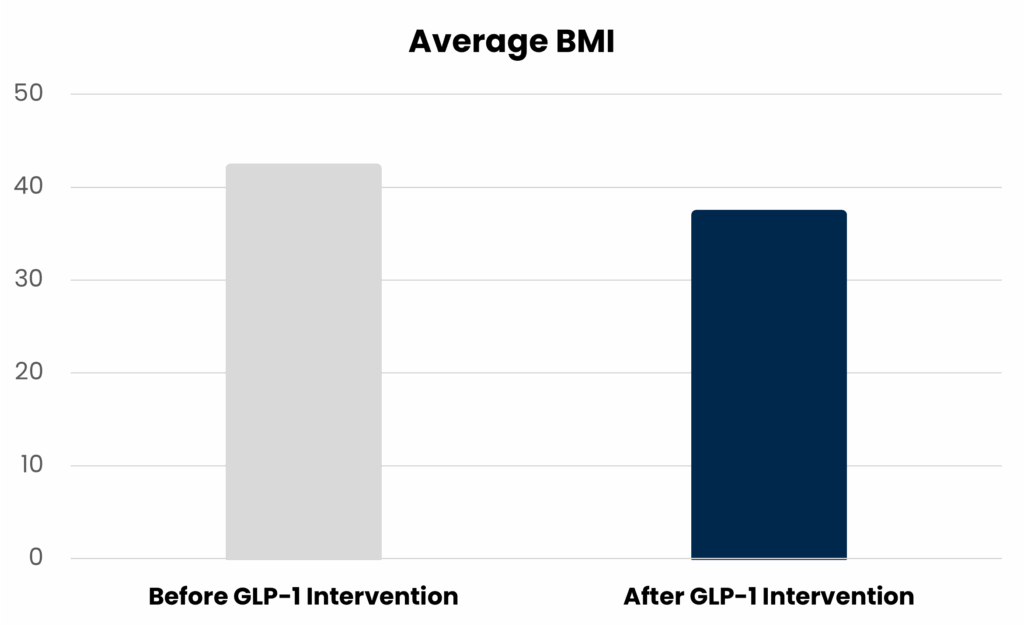
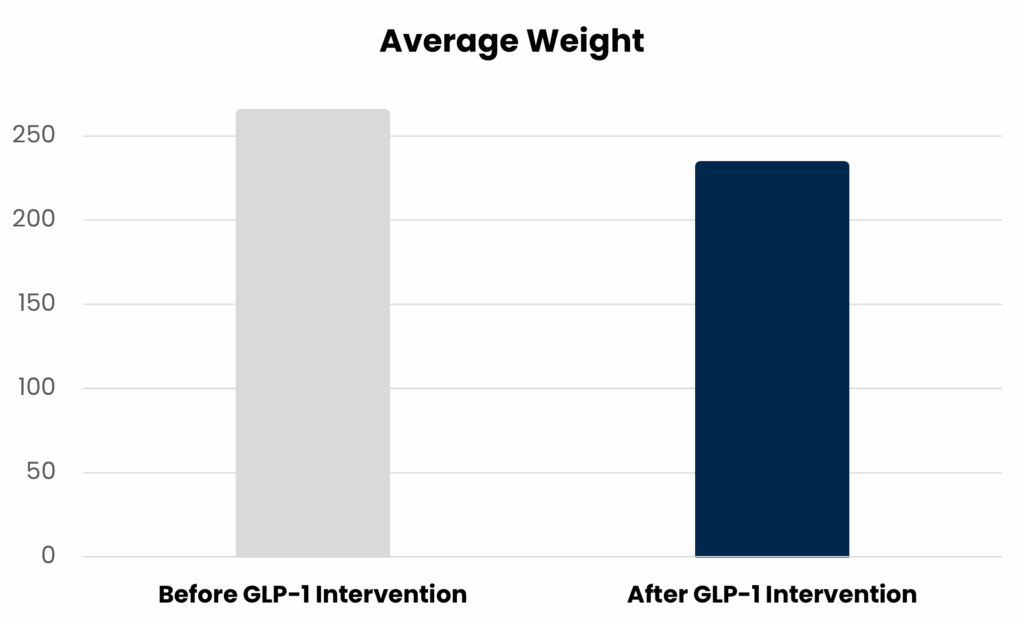
For patients with type 2 diabetes, GLP-1 therapy significantly improved blood sugar control. The average A1C dropped from 8.33 to 6.24, a 25% reduction. This shift moves many patients from uncontrolled to near target range for long-term health.
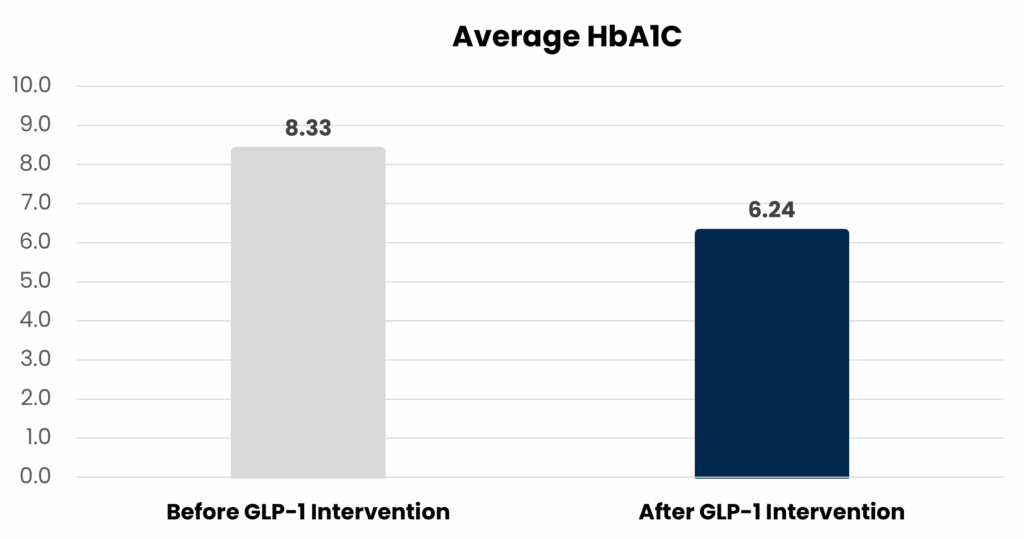
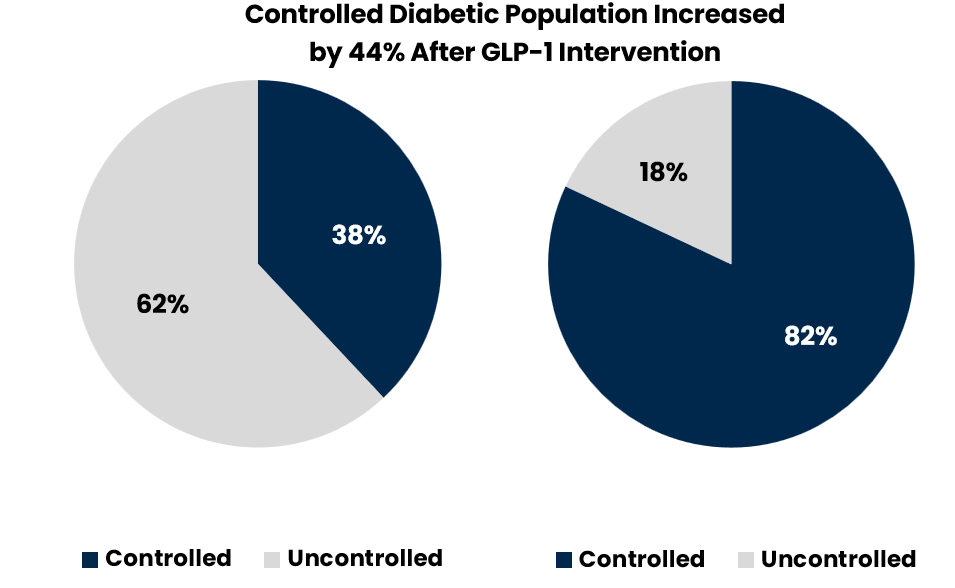
GLP-1s were associated with a notable shift in blood pressure status. Before starting treatment, only 22% of patients were considered non-hypertensive. After intervention, that number grew to 50%, more than doubling the non-hypertensive population.
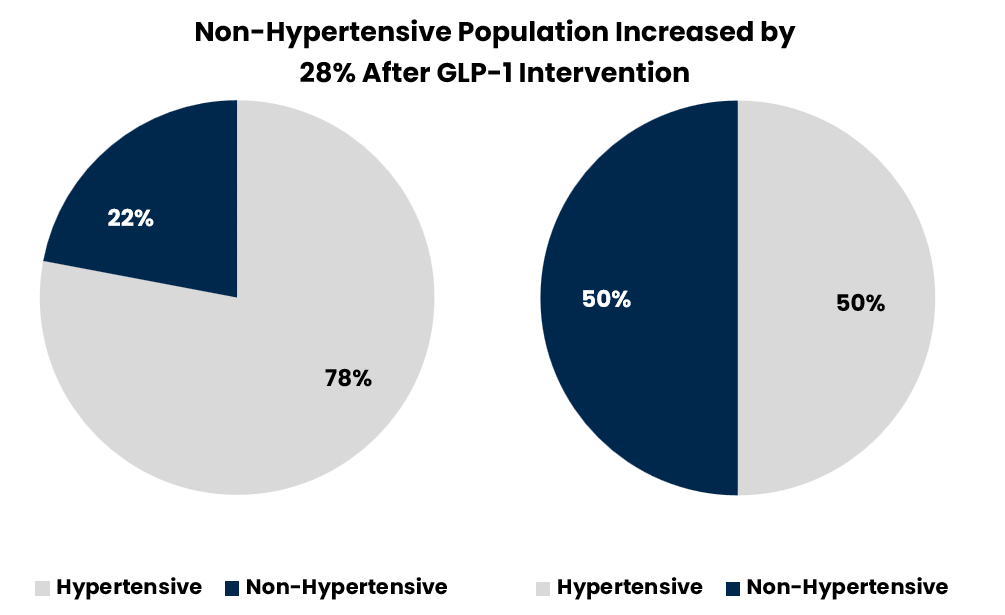
These results reflect real-world outcomes from patients at SALTA using GLP-1 medications under clinical supervision. While individual results vary, the data shows consistent improvements in weight, blood sugar, and blood pressure – key factors in long-term health.
While GLP-1 medications can be highly effective, they are not free of side effects. Most people experience mild symptoms, especially in the first few weeks as their body adjusts. A smaller group may face more serious risks that require careful evaluation before starting.
| Common Side Effects | Less Common but Serious Risks |
| Nausea | Pancreatitis (inflammation of pancreas) |
| Constipation or diarrhea | Gallbladder problems |
| Fatigue | Low blood sugar (if on other meds) |
| Decreased appetite | Possible thyroid tumor risk |
| Bloating or heartburn | Allergic reactions (rare) |
GLP-1 medications are not recommended for people who:
Myth: GLP-1s are a magic weight loss drug.
Reality: These medications work best when paired with healthy eating, movement, and ongoing support. They help reduce appetite, not replace discipline.
Myth: Once you start, you’re on it for life.
Reality: Some people stay on long term, others taper off. The goal is to build lasting habits alongside the medication, not create dependency.
Myth: They’re only for people with diabetes.
Reality: Several GLP-1s are approved specifically for weight loss, even in people without diabetes.
Myth: Everyone loses 30 pounds.
Reality: Results vary. Some lose 5 percent of their weight, others 15 percent. Individual results depend on biology, habits, and dosage.
GLP-1 medications like semaglutide and tirzepatide have opened new doors for people struggling with weight or blood sugar. But they’re not quick fixes. Understanding how they work, what to expect, and whether they’re right for you is the first step. With the right care and support, they can be a powerful tool in a long-term plan for better health.
With DPC now officially compatible with HSAs, there’s never been a better time to take control of your healthcare.
Join SALTA today or schedule a free consultation to see how Direct Primary Care can work for you.
Laura Holt is a board-certified Family Nurse Practitioner at SALTA Direct Primary Care with over 15 years of clinical experience. She is passionate about building long-term relationships with patients and takes a holistic, evidence-based approach to managing chronic conditions, preventive care, and overall wellness.